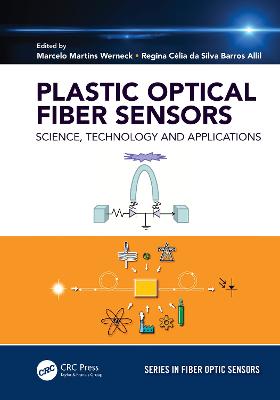Introduction to Adaptive Optics for Vision Science
Introduction to Adaptive Optics for Vision Science
Hampson, Karen
Taylor & Francis Ltd
12/2023
200
Mole
Inglês
9781138746763
Descrição não disponível.
Introduction. Origins of Adaptive Optics. Astronomy and Adaptive Optics. Adaptive Optics and the Eye. The Eye as an Adaptive Optics System. Imperfections in the Eye's Adaptive Optics System. History of Adaptive Optics Applied to the Eye. Summary. Chapter 2: Designing and Building a System for Vision Science. Optical Design of a Basic System. The Importance of the Pupil. Relay Telescopes. Optical Components. Field of View and Light Loss. Removing Reflections. Light Sources. Choosing the wavelength. Choosing the type of light source. Safety Considerations. Mounting and Aligning a System. Mounting the Optics. Aligning the System. Stabilising the Subject. Summary. Chapter 3: Measuring the Eye's Aberrations. Description of the Eye's Aberrations. Rays to Wavefronts. Zernike Polynomials. Temporal Properties. Shack-Hartmann Sensor. How it Works. Determining Spot Locations. Choosing the Shack-Hartmann Components. Obtaining the Zernike Coefficients. Beyond Conventional Shack-Hartmanns. Other Types of Sensors. Curvature Sensor. Pyramid Sensor. Wavefront Sensorless Systems. Summary. Chapter 4: Correcting the Eye's Aberrations. How Correctors Work. Phase Conjugation. Factors to Consider when Choosing a Corrector. Deformable Mirrors. Segmented. Continuous. Liquid Crystals. Other Types of Corrector. Correctorless Systems. Increasing System Correction Capabilities. Removing Defocus and Astigmatism. Stroke Amplification. Summary. Chapter 5: Controlling an Adaptive Optics System. Open-Loop versus Closed-Loop Systems. Obtaining the Corrector Signals. Via the Slopes. Via the Zernike Polynomials. Time Delays and their Consequence. Origin of Time Delays. Instability. The Integral Controller. Why it is Used. Doing a full Correction. Manipulating the Zernike Coefficients. Measuring System Performance. Writing the Software. Summary. Chapter 6: Retinal Imaging with Adaptive Optics. Anatomy of the Retina. Instruments and their Application. Flood Illumination Ophthalmoscope. Scanning Laser Ophthalmoscope. Optical Coherence Tomographer. Multiconjugate Systems. Multimodal Instruments. Summary. Chapter 7: Vision Manipulation with Adaptive Optics. Limits of Visual Acuity. Accommodation. Dual Channel Monocular System. Binocular System. Visual Simulation and Blur Adaptation. Summary. Chapter 8: The Future. Summary of what we can Currently Achieve. Limits and how they can be Overcome. Appendix. Laser Safety calculationsTroubleshooting.
Este título pertence ao(s) assunto(s) indicados(s). Para ver outros títulos clique no assunto desejado.
optometry;vision science;optics vision Systems;aberrations;visual acuity;diffraction imaging
Introduction. Origins of Adaptive Optics. Astronomy and Adaptive Optics. Adaptive Optics and the Eye. The Eye as an Adaptive Optics System. Imperfections in the Eye's Adaptive Optics System. History of Adaptive Optics Applied to the Eye. Summary. Chapter 2: Designing and Building a System for Vision Science. Optical Design of a Basic System. The Importance of the Pupil. Relay Telescopes. Optical Components. Field of View and Light Loss. Removing Reflections. Light Sources. Choosing the wavelength. Choosing the type of light source. Safety Considerations. Mounting and Aligning a System. Mounting the Optics. Aligning the System. Stabilising the Subject. Summary. Chapter 3: Measuring the Eye's Aberrations. Description of the Eye's Aberrations. Rays to Wavefronts. Zernike Polynomials. Temporal Properties. Shack-Hartmann Sensor. How it Works. Determining Spot Locations. Choosing the Shack-Hartmann Components. Obtaining the Zernike Coefficients. Beyond Conventional Shack-Hartmanns. Other Types of Sensors. Curvature Sensor. Pyramid Sensor. Wavefront Sensorless Systems. Summary. Chapter 4: Correcting the Eye's Aberrations. How Correctors Work. Phase Conjugation. Factors to Consider when Choosing a Corrector. Deformable Mirrors. Segmented. Continuous. Liquid Crystals. Other Types of Corrector. Correctorless Systems. Increasing System Correction Capabilities. Removing Defocus and Astigmatism. Stroke Amplification. Summary. Chapter 5: Controlling an Adaptive Optics System. Open-Loop versus Closed-Loop Systems. Obtaining the Corrector Signals. Via the Slopes. Via the Zernike Polynomials. Time Delays and their Consequence. Origin of Time Delays. Instability. The Integral Controller. Why it is Used. Doing a full Correction. Manipulating the Zernike Coefficients. Measuring System Performance. Writing the Software. Summary. Chapter 6: Retinal Imaging with Adaptive Optics. Anatomy of the Retina. Instruments and their Application. Flood Illumination Ophthalmoscope. Scanning Laser Ophthalmoscope. Optical Coherence Tomographer. Multiconjugate Systems. Multimodal Instruments. Summary. Chapter 7: Vision Manipulation with Adaptive Optics. Limits of Visual Acuity. Accommodation. Dual Channel Monocular System. Binocular System. Visual Simulation and Blur Adaptation. Summary. Chapter 8: The Future. Summary of what we can Currently Achieve. Limits and how they can be Overcome. Appendix. Laser Safety calculationsTroubleshooting.
Este título pertence ao(s) assunto(s) indicados(s). Para ver outros títulos clique no assunto desejado.








